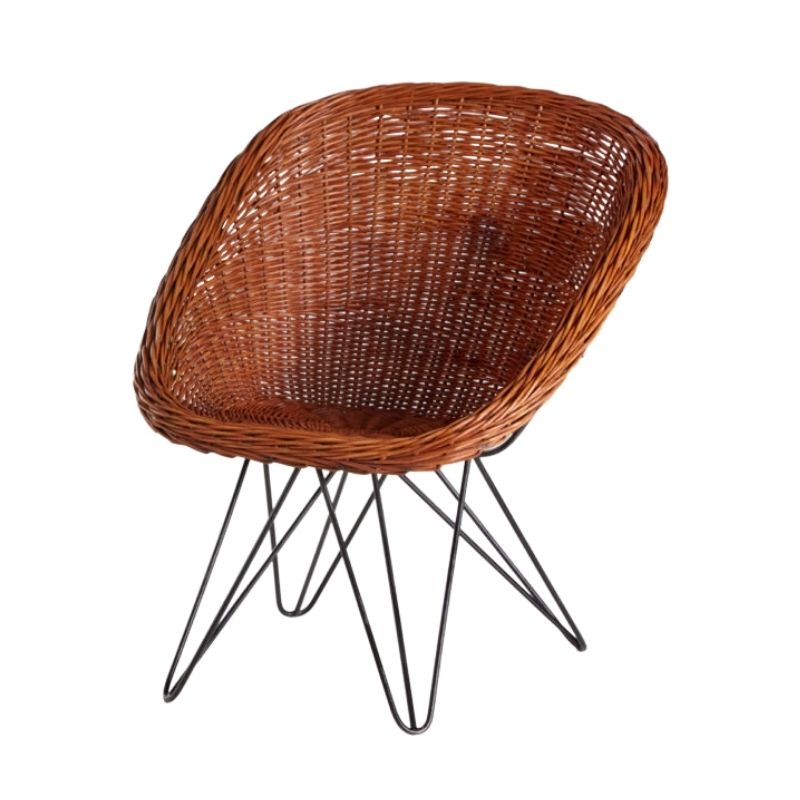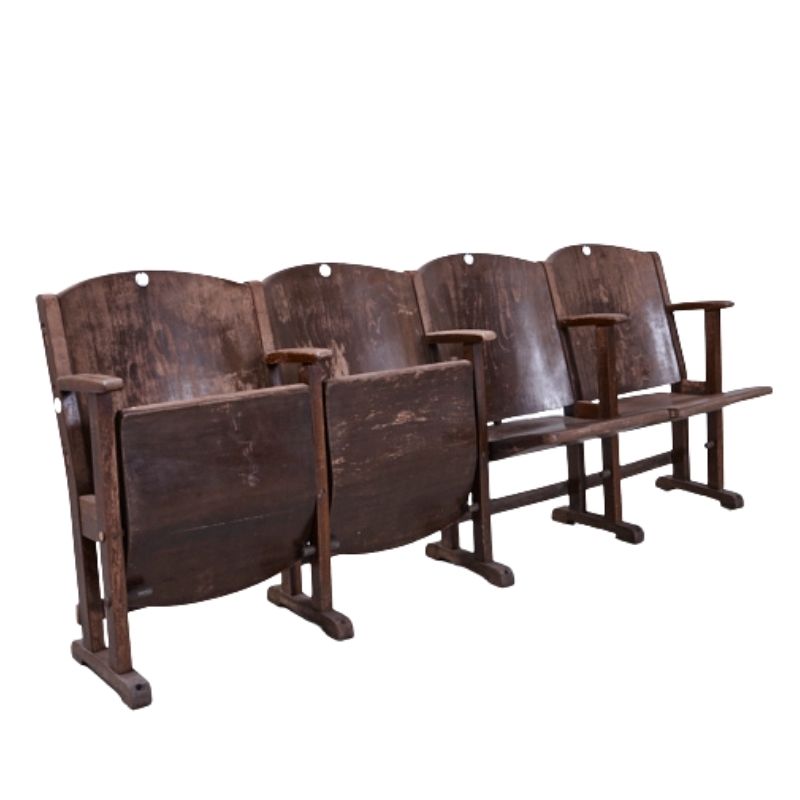Carrying over from the footwear discussion that started a few days ago, it looks like there's some interest in exploring the influence of military equipment on civilian product design. Discussed so far::
--The Eames plywood leg splint (designed for the US Navy during WW2; led to further experiments with plywood after the war).
--The Volkswagen "Thing" (a 1970s civilian revival of the WW2 Kubelwagen, which was the German army's even-more-functional adaptation of Dr. Porsche's Volkswagen).
--Bell-bottom trousers (wide legs adopted circa 18th century for easy rolling up -- handy when swabbing decks or wading in shallow water; yes, Whitespike, the denims issued to US sailors can, or at least could in my day, be doffed, inflated, and used as a temporary flotation device).
--The current Hummers and the original jeep (boxy jeeps, with windshields folded down and wheels removed, could be stacked for shipping just like crates -- or for that matter like the now-ubiquitous steel cargo containers that I think share a 50th anniversary this year with, AHA!, the Eames lounge chair).
More thoughts, please!
steer me in the right direction
Wouldn't you consider the Case Study House prgram, and thus the Case Study style, to be a military influence? I know it isn't a direct product adaptation like the Jeep. I thought they did however respond to the need for housing for many returning soldiers from WW11. Also, wasn't some of the material choices for the construction influenced by what was available due to wartime?
Also - one mentioned that you forgot:
Jens Risom's famous webbed chair employed cheap parachute strap webbing when it was designed. I remember him saying it was because of a lack of foam and/upholstery at the time due to the war....
In scanning
Esther McCoy (she's the Original Authority on the Case Study program) I can find only this: "new aircraft glues made a variety of laminates a reality. . ."
The steel houses of Soriano, Elwood and Koenig seem to have derived from prewar experiments by Mies, Neutra and others -- no mention is made of that material being either more or less available as a result of the war (the program was inaugurated seven months before the end of the war). McCoy does mention the poor quality (and quantities) of conventional materials to be had at that time. . .
If the pent-up desire for new houses and housing types, both by architects and by the public, resulting from the interruption of the war, can be said to be that war's influence on the new architecture, then you are right. . .
I hadn't heard about Risom's use of parachute webbing; as one who is ever suspicius of what designers say about their motivations, I would point to Aalto and other Scandinavians as the more likely influence on his use of webbing ! But perhaps I am overly cynical. . .
Let's see: War. . .war. . .how about the desire of every red-blooded American to have a gun in the nightstand ? (Didn't a major designer show lamps with rifles at their core, last year ?) I'm failing to think of further examples. And it seems such a potent subject. . .
I remember the gun lamp ......
I remember the gun lamp ... I'll see if I can find it.
I certainly see aalto and mathsson and the like ebing an influence on Risom's designs. I have read that about him a few times however. I wonder if the straps used previously were made specifically for the purpose, and Risom reasoned that he could use the parachute straps in the same manner ...
Also, wouldn't you think the scarcity of traditional materials would have an effect on design?
Let's see...
WWII Jeeps evolved into SUVs.
HMVEE's became styling inspiration for Hummers.
Quansett Huts became the styling inspiration for, uh, Quansett Huts.:-)
Military bush jackets became Safari Coats.
Military uniforms became marching band uniforms.
WWII Military camp stoves by Coleman became recreational camping stoves after the war.
On the more taboo side...
British and American Sam Brown belts became BDSM harnesses.
Nazi uniforms and Nazi style became BDSM style.
Jacque Cousteau's aqua lung for Underwater Demolition Team's in WWII became scuba tanks for commercial and recreational diving.
Gulf War I Stealth fighter jets became styling inspiration of current Cadillac cars.
Got to hell caps of World War I and II armies became Boy Scout hats.
Military mess kits, became camping mess kits.
Most of the commercial products descended from military apps., or aping them in some way or another, not only borrowed the function, but significant amounts of the aesthetics as well.
good point
that good design can come from something as horrid as war - but that is the absurdity that is life I guess.
Let's not forget the 'campaign chair' - if that is the name. The foldable arm chair consisting of wood, canvas & leather. I saw it in a textbook and was described as very comfortable esp. considering its spareness of material.
Has anyone ever sat in such a chair? Is it comfortable and durable?
On that same note, I find the designs of items designed for "nomadic" practices often times really interesting e.g. camping equipment.
The "high tech"
design movement (anybody remember that ?) had some connections with the "new uses for found objects" concept -- which certainly is allied to the present topic. And the "industrial" or no-nonsense qiuality of military, camping, or indeed sports equipment (minus the highly visible "branding") are all raw material for the inventive designer.
The campaign chair
has some relation to the ubiquitous "director's chair" -- a folding frame of turned and other wood parts, and slings of sturdy fabric that are tensioned when the frame is locked in the open position.
There is an inherent compromise in comfort when a seat is in the form of a simple stretched -- ie sagging -- surface, in my experience.
Let's be careful here....
Nasa but even more so, users (manufacturers) of materials that were also used by Nasa often cleam that the product they use is a result of the space program. Nasa has never corrected these statements because et trives by such legends...not very different from say, formula one racing and it's influence en car construction. So...memory foam existed well before Nasa decided to use it and so did non stick surfaces like Teflon...and a zillion other things that are claimed or advertised as space age materials. Nasa loves these legends because it has such a hard time to justify it's existence and anything helps even small lies...
If you need any help, please contact us at – info@designaddict.com









